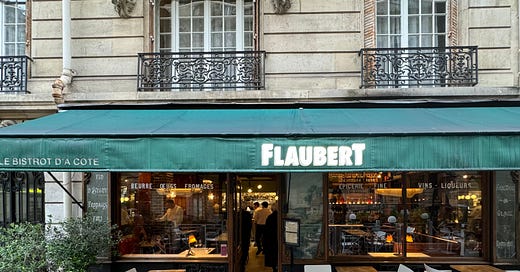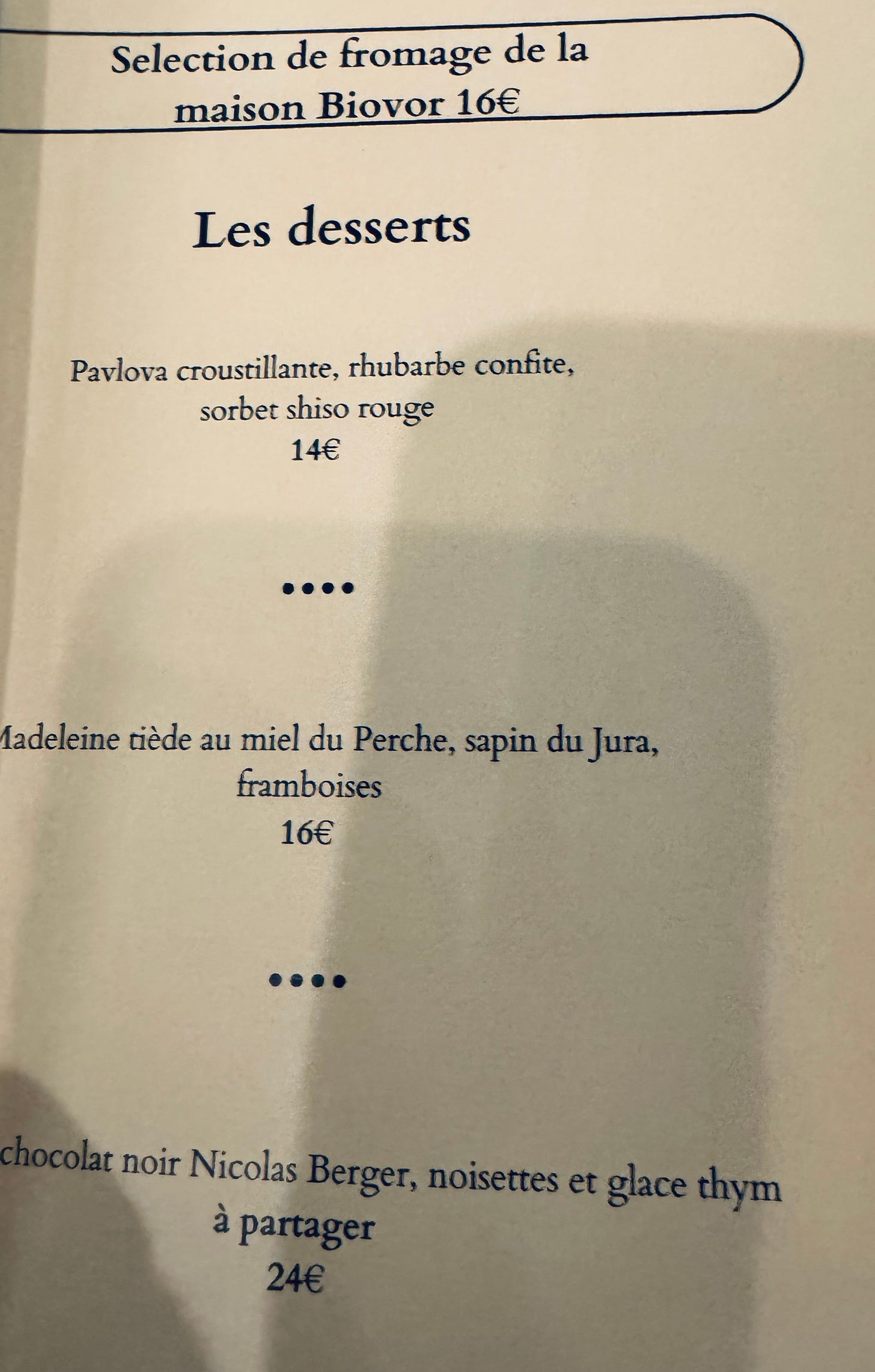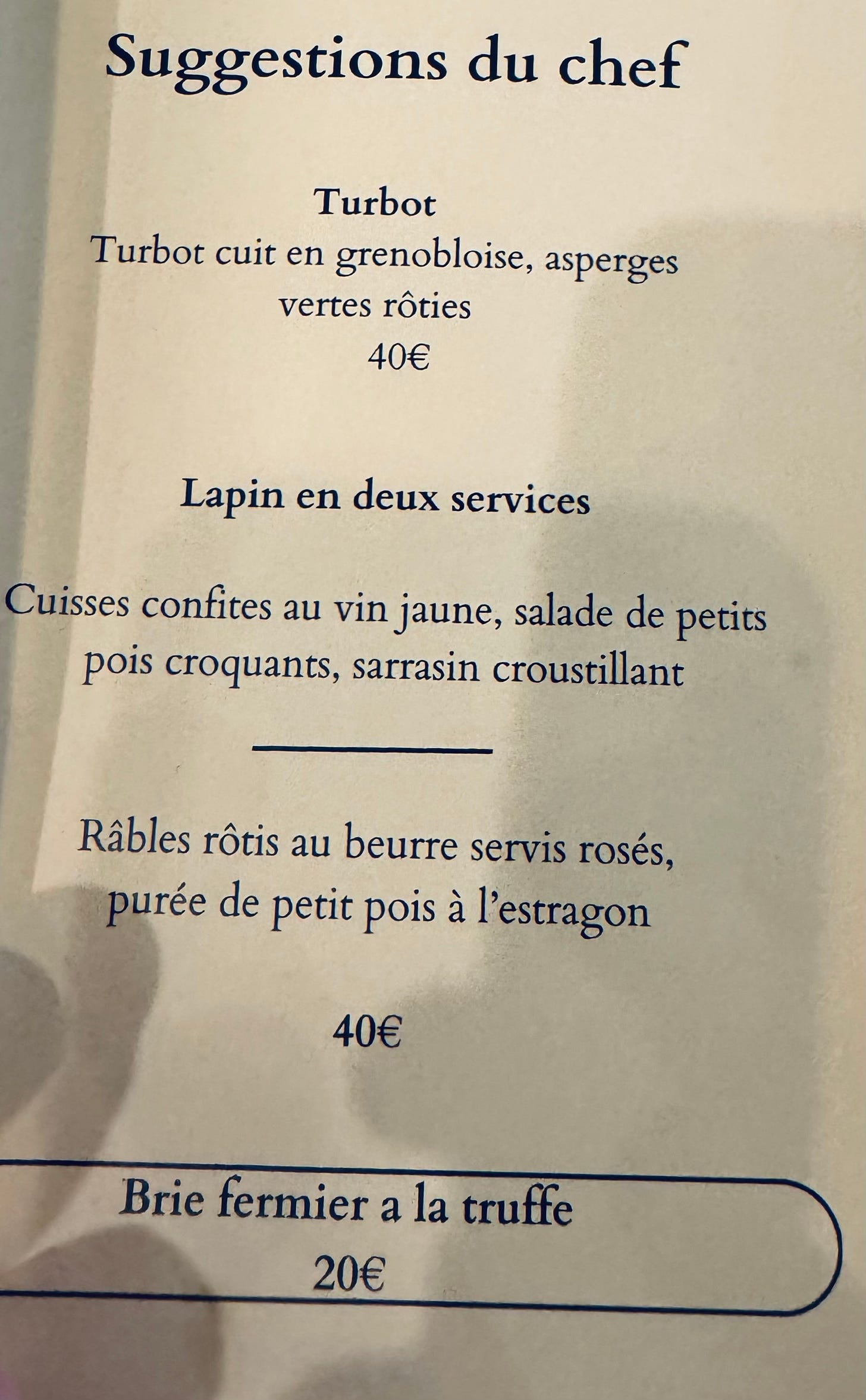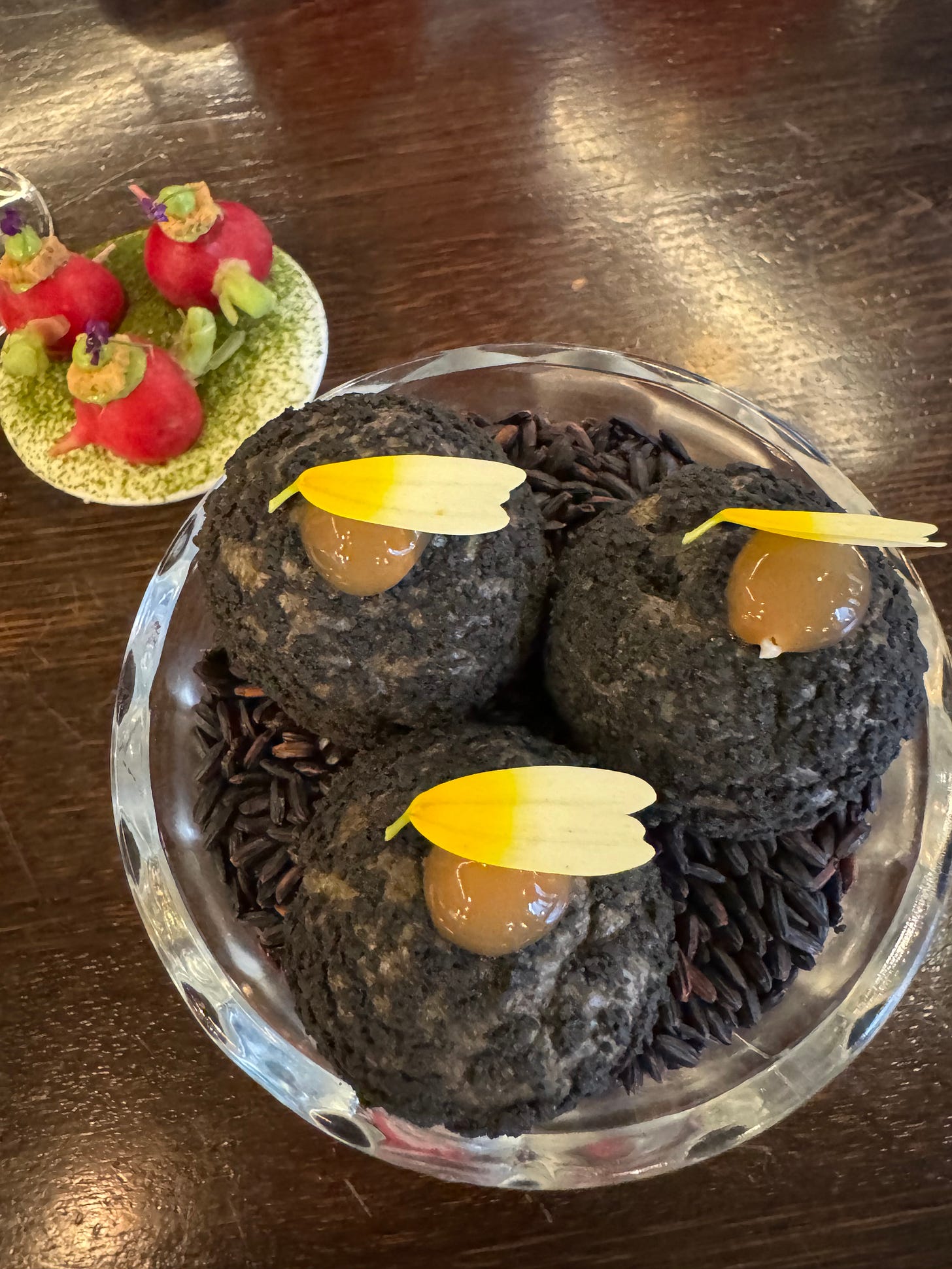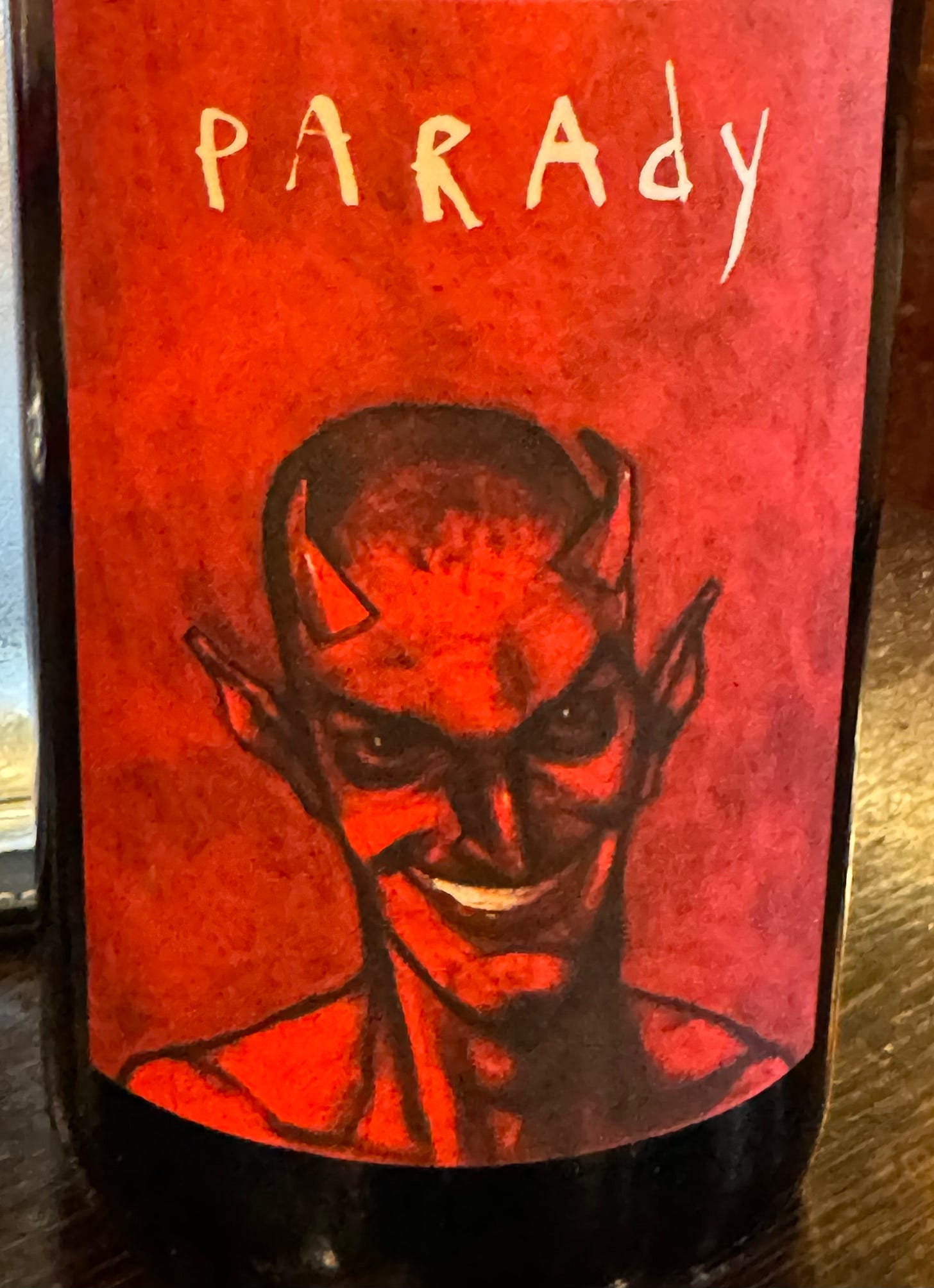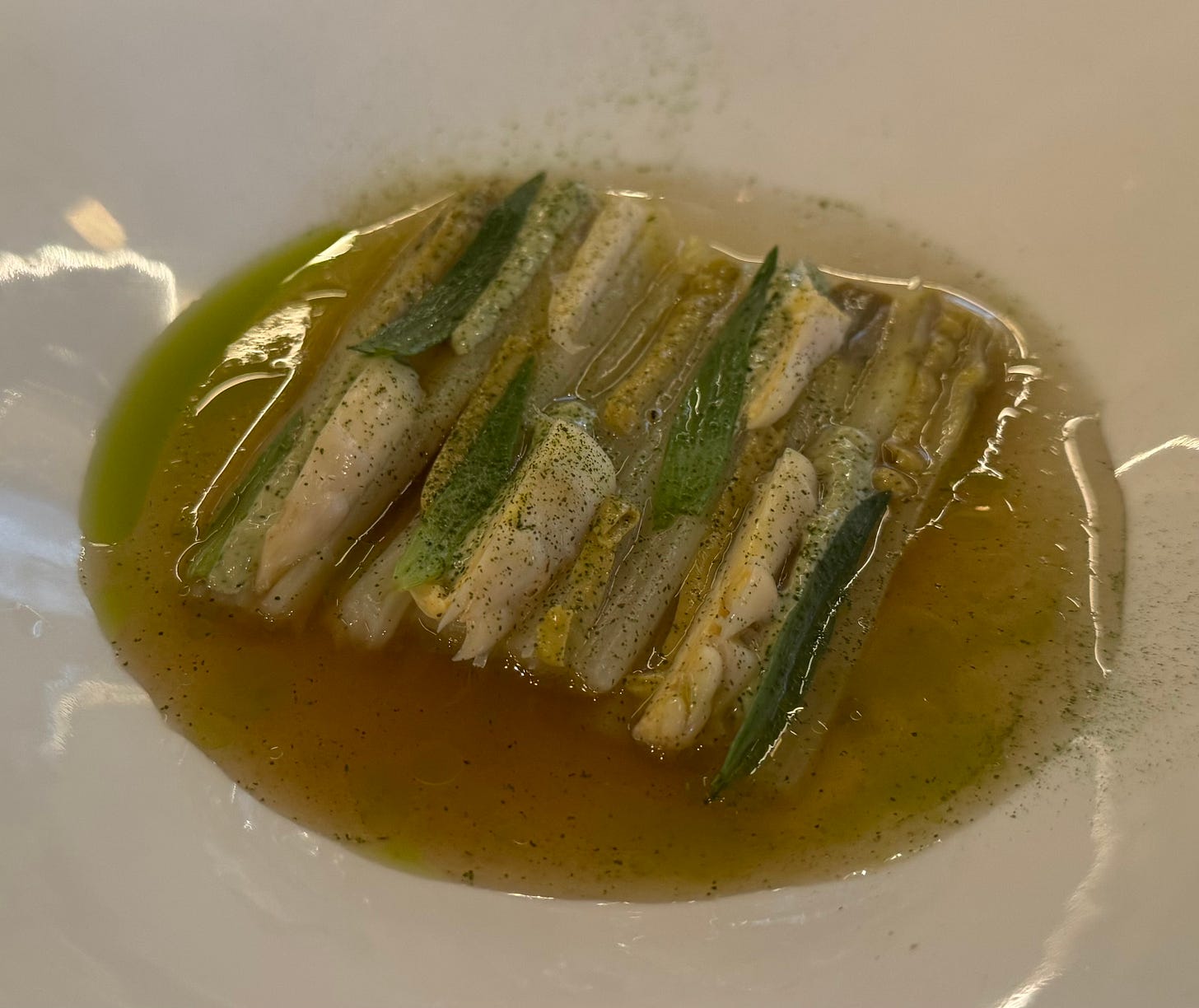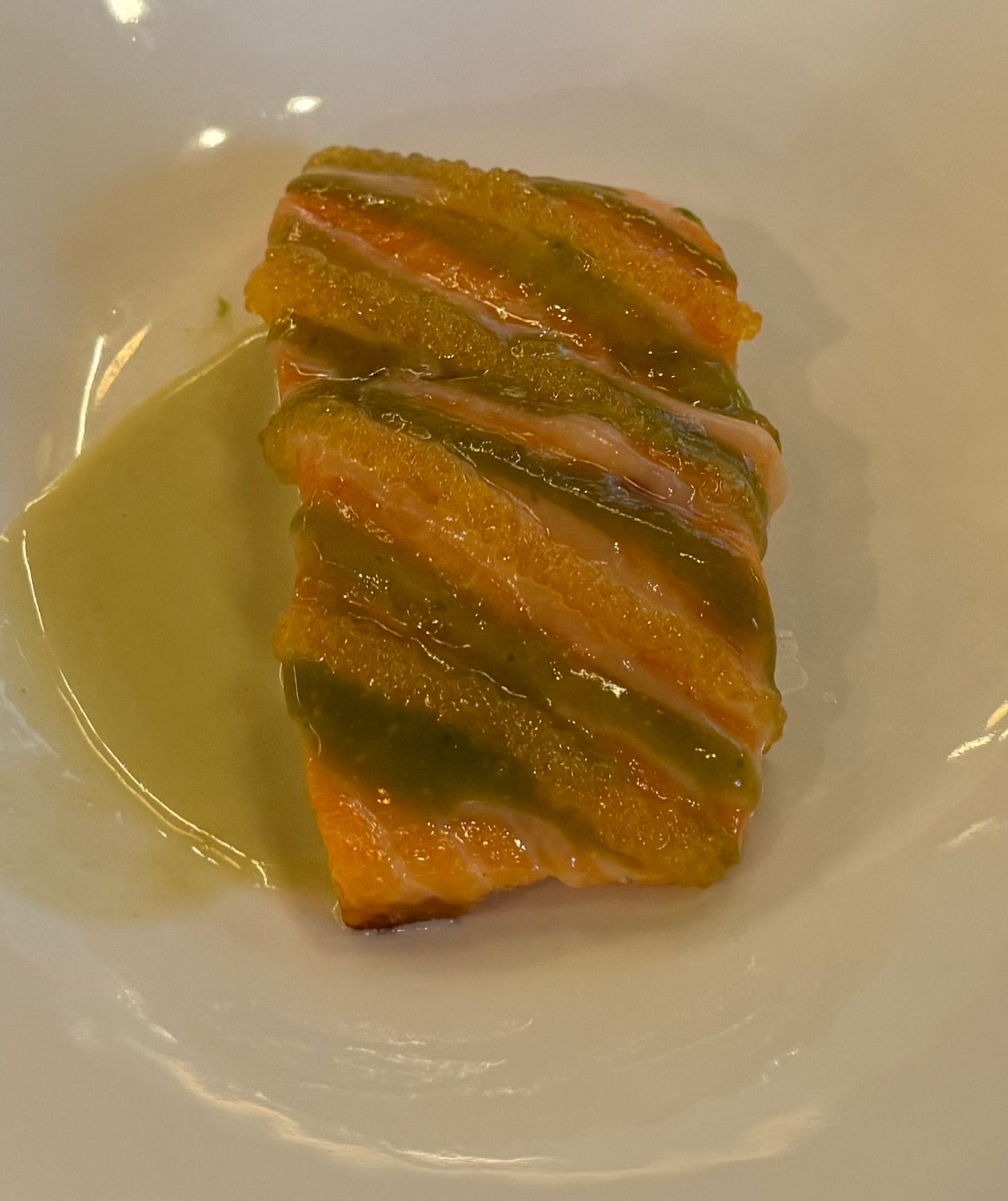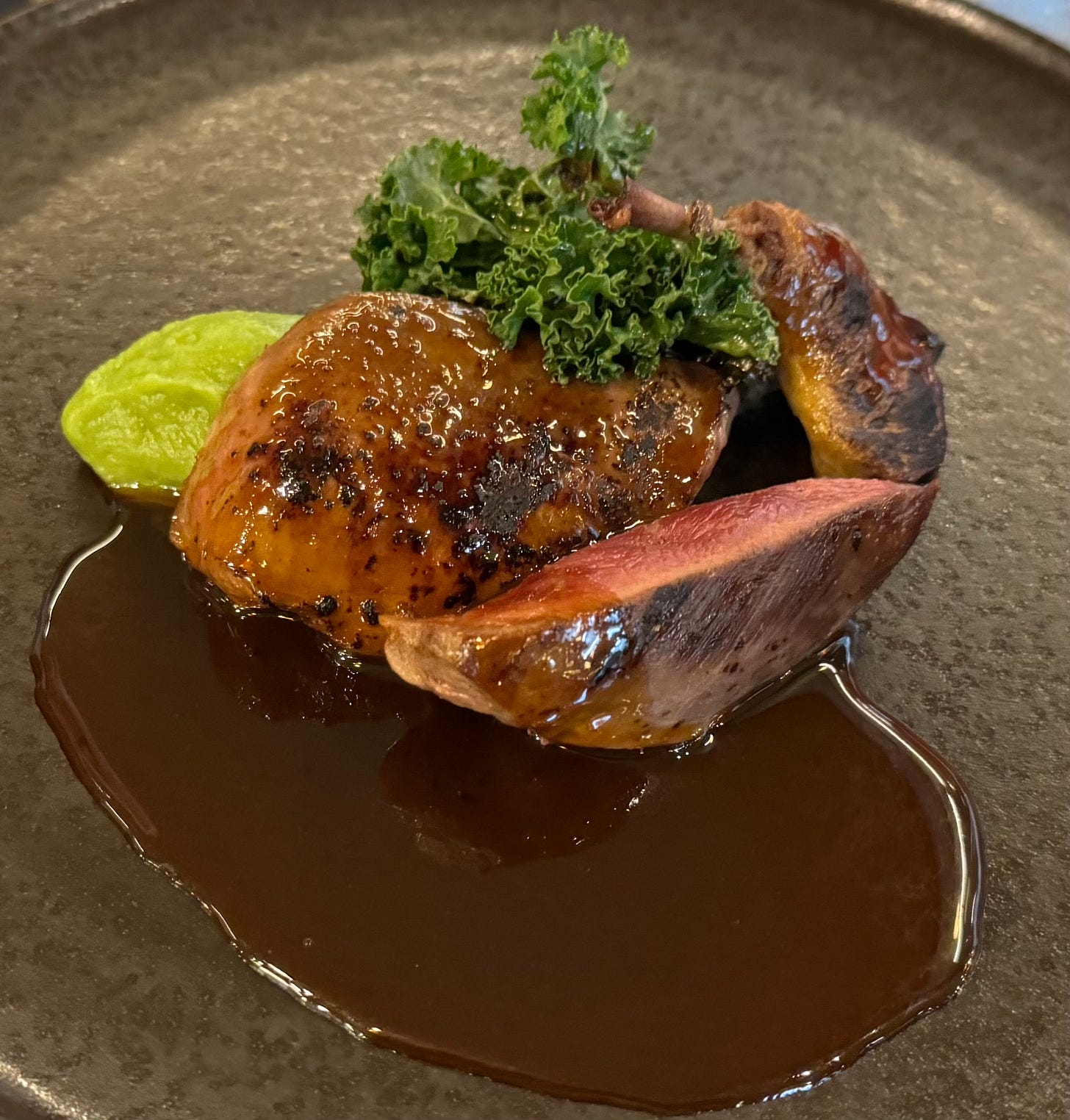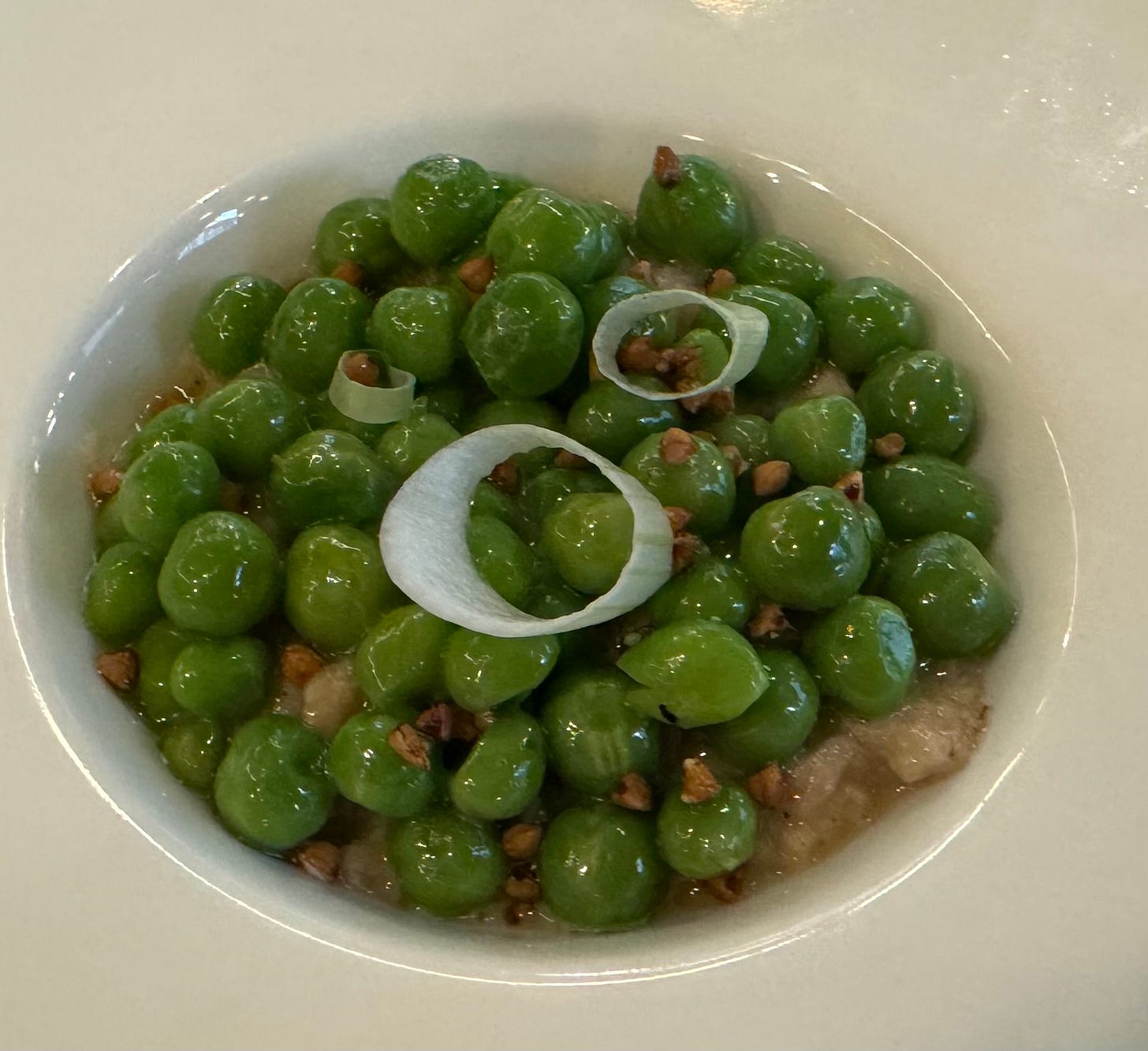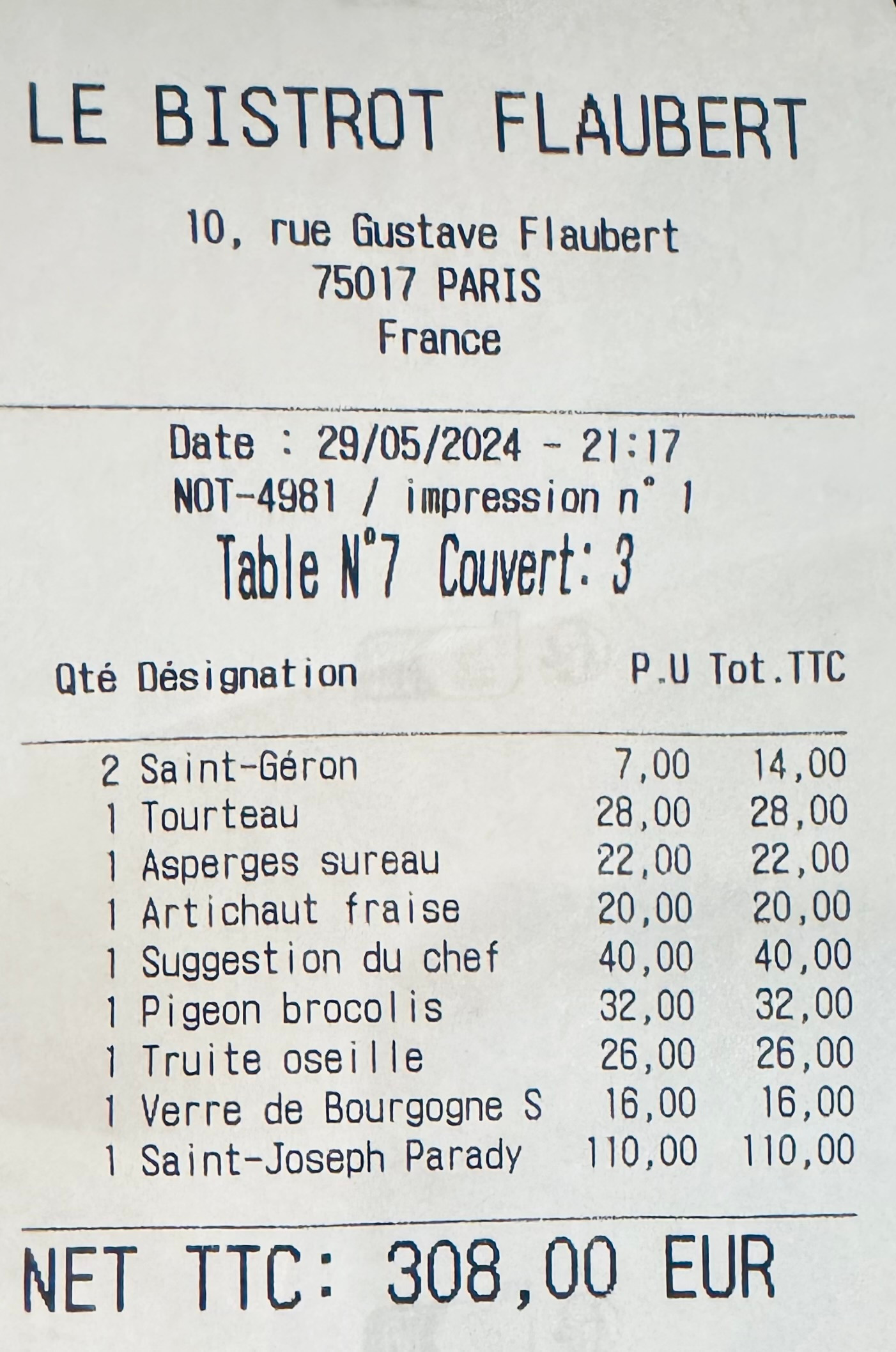Le Bistrot Flaubert is in the quarters next to Maison Rostaing, formerly restaurant Michel Rostaing (which currently is closed, re-opening in October). In an earlier era, the Bistrot Flaubert space housed Rostaing’s Bistrot d’à Côté (you can still see that on the left side of the awning in front of the restaurant), next door to Rostaing’s main restaurant.
Bistrot Flaubert is part of the group of restaurants that Stéphane Manigold’s group Eclore has assembled since 2018, which include two-star Maison Rostaing and one-star Granite, Braise, Contraste, Liquide, and Hémicycle. Bistrot Flaubert opened in December 2020 and is the only one of the group not to have a Michelin star. The first chef at Bistrot Flaubert, Flavio Lucarini, was shifted to Hémicycle for its opening at the end of last summer, whereupon he promptly was awarded a star there earlier this year. The current chef at Bistrot Flaubert is Erwan Ledru, who is doing what I would call contemporary traditional food; a star may yet be in the stars.
I went to Bistrot Flaubert with friends who years ago in the era when Michel Rostaing was in charge of his eponymous restaurant and the Bistrot d’à Côté went to the latter. They found the interior back then replete with tchotchkes which somehow worked, almost like a converted old apothecary, but that has somewhat changed now.
The carte (across several pages):
For amuses bouches, we received radishes with a garnish and fromage frais rolled in something else. Neither was memorable, which is why I can’t even describe the ingredients properly.
As at all the Manigold restaurants, the wine list is good, but also as with other Manigold restaurants, prices are a little on the high side and you have to do some searching to come up with a wine at an interesting price.
We settled on a red 2020 Saint-Joseph “Parady” from one of the appellation’s top producers, Bernard Gripa.
The name “Parady” with the picture of a devil is a play on the fact that this special cuvée comes from a famous vineyard in Saint-Joseph named Paradis (which means paradise in French). The wine was excellent with a smooth texture, roundness, and deep ripe (but not overripe) Syrah fruit.
One of our table also took a white Burgundy from the by-the-glass selections because she was going to have the trout main course. The wine by the glass offerings:
For her first course, one of my friends took the crab (tourteau) on a bed of lentils with cocktail sauce and crab juice:
She pronounced it excellent, and I had a bite and am of the same opinion. The texture of the lentils (hidden below the crab in the picture above) played well against the crab and the flavors of both were rounded out by the cocktail sauce and crab juice.
My other friend took the white asparagus with tarragon-flavored Mayonnaise, which he very much liked:
I took the artichokes à la grecque with fresh cheese and coriander. Every season, there seems to be a combination that is not necessarily new, but that appears frequently in restaurants around Paris. This spring, it is strawberries (which are especially excellent this year) in a savory first course, and as you can see, they were added to my artichokes à la grecque. The dish was light and fresh with purity to the artichokes which had a texture that was supple but not soft or flabby, and overall there was subtlety in the combination of flavors.
The friend who had the crab then took the trout with sorrel main course, which she equally liked.
My other friend took the roast squab smoked over a barbecue coated with a pralinée of French peanuts, and he, too, was very pleased by this. It was served with a broccoli purée.
I took the rabbit served in two courses, although the order of their service was the opposite of that stated on the carte. First was the saddle roasted and served with a purée of peas and tarragon. This was outstanding, with the rabbit being tender, moist, and flavorful.
Next, came the rabbit thigh confit in vin jaune (buried in the picture here beneath the peas) and with crusty bits of buckwheat. As good as the rabbit thigh was, it was the peas that were the star of this dish. Every restaurant in Paris this time of year features multiple dishes with asparagus, but the truth is the super spring standouts this year are the exceptional peas, fava beans, and strawberries.
We were too full to take dessert but were given a bowl of candied citrus mignardises that were lively and intense with just enough sweetness to hit the spot without being cloying.
The bottom line for two sparkling waters, one bottle and one glass of wine, three first courses, and three main courses, and of course, tax and service charge included:
My friends found this meal somewhat better than the ones that they had at the Bistrot d’à Côté during Michel Rostaing’s reign. Having eaten at all the other starred restaurants in the Eclor group except Braise, I can say that this meal at Bistrot Flaubert was at least the equal in quality of what I ate at any of them except (1) Hémicycle and (2) the best of the meals I have had at Granite (not all meals there have been of equal quality). So a star should come here, too, probably sooner rather than later, and inevitably when a star is awarded, prices increase. So for a relative bargain, go now if you can.
Bistrot Flaubert
10 rue Gustave Flaubert, 75017 Paris
Telephone: 01 42 67 05 81
http://www.bistrotflaubert.com/
Monday-Friday lunch and dinner
Métro: Pereire, Wagram, Courcelles, Ternes
